The first edition of Taipei Dangdai (台北當代) debuts today at the Nangang Exhibition Hall. Organized by former team of Art HK, the predecessor of Art Basel in Hong Kong, the fair hopes to build on Taipei’s well-established art scene and establish itself as an important occasion for the international art market within the Asian region. Ninety gallery exhibitors will participate, including many big name dealers, including Hauser & Wirth, Lisson Gallery, Kukje Gallery, Arario Gallery and Gagosian. “I eagerly anticipate ... the fair will be a game-changer for Taiwan,” says Taipei-based collector Leslie Sun (孫怡). A strong presentation of Taiwanese dealers will be present as well, including Lin & Lin Gallery (大未來林舍畫廊), Project Fulfill Art Space (就在藝術空間), Tina Keng Gallery (耿畫廊) and Mind Set Art Center (安卓藝術), among others. Lin & Lin Gallery will be showing the works of prominent Taiwanese artist Chen Chieh-jen (陳界仁) and Beijing-based Liu Wei (劉煒). Mind Set Art Center will feature the paintings of Rao Fu (傅饒) and Tang Jo-hung (黨若洪), two artists who engage in a dialogue between the traditional and contemporary. The fair has also curated a special section of works under the price of US$8,000, including works by rising young stars as well as photographs and prints by more established names.
■ Nangang Exhibition Hall (南港展覽館), 1, Jingmao 2nd Rd, Taipei City (台北市金茂二路1號), tel: (02) 7729-9256. Open Friday from 12pm to 8pm, Saturday from 12pm to 7pm and Sunday from 12pm to 5pm. Admission: NT$400
■ Until Sunday
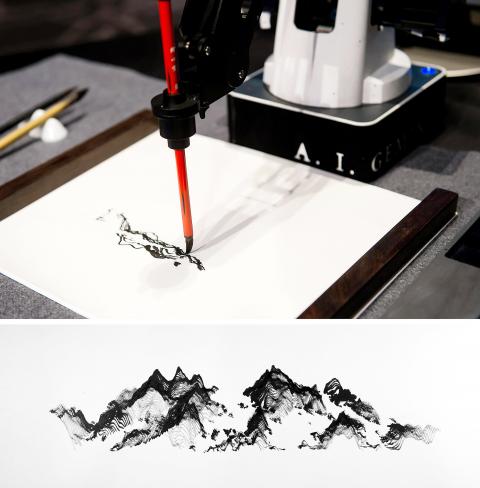
Photo Courtesy of 3812 Gallery
Ink Now Art Expo (水墨現場) is a new art fair that will grace the Expo Dome of Taipei Expo Park this weekend with a promising presentation of ink-based art. Founded by Hong Kong entrepreneur Calvin Hui (許劍龍), the show will present 30 galleries active in Asia, including Hanart TZ Gallery (漢雅軒), 3812 Gallery and YEWN (淵) from Hong Kong, SHIBUNKAKU from Kyoto, Amy Li Gallery (艾米李畫廊) from Beijing and Xu Gallery (言午畫廊) from Shanghai, Da Xiang Art Space (大象藝術空間館) and Chini Gallery (采泥畫廊) from Taiwan, among others. SHIBUNKAKU will be showing works by Japanese calligrapher Yuichi Inoue and video artist Yang Yong-liang (楊泳梁). Hanart TZ Gallery will present a solo exhibition of the late literati painter Yeh Shih-chiang (葉世強). Hui says the fair is also committed to facilitating the growth of Ink Art from a more holistic point of view by collaborating closely with art specialists, academics, curators and gallerists. In conjunction with the fair, Ink Now has also launch its online platform, an online gallery and journal dedicated to the promotion of ink art.
■ Taipei Expo Park Expo Dome (台北花博公園爭艷館), 1, Yumen St, Taipei (台北市玉門街1號), tel: (02) 2596-3812. Open Saturday and Sunday from 11am to 7pm and Monday from 11am to 6pm. Admission: NT$350
■ Until Monday
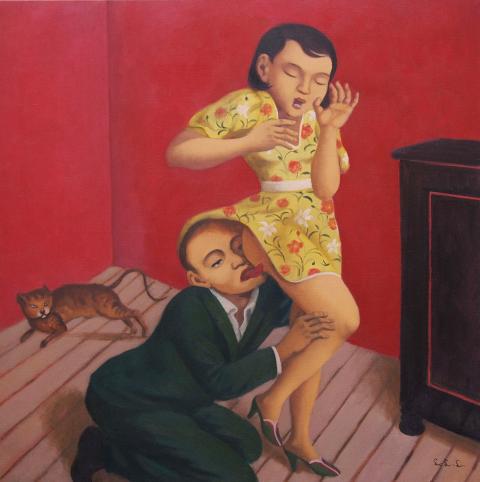
Photo Courtesy of Caves Art Center
Caves Art Center is currently showing The Effulgent Tiller of Hope (絢櫱之冀), a solo show by Taiwanese painter Lin Li-ling (林麗玲). In the 1980s, Lin studied under the prominent artist and writer Chiang Hsun (蔣勳) at Tunghai University, before moving abroad to France to further her studies. Lin is known for her explorations of the figurative and floral through imaginative portraits and still life compositions. Her oil paintings and drawings express her reflections on the human condition, particularly ideas of sexuality, love and desire. The exhibition features a selection of recent works that offer insights into her recent creative developments. “In life, there is the negative and the positive. What I strive to do in art is to transform the negative, not into the positive, but into something else in art,” Lin says.
■ Caves Art Center (敦煌藝術中心), 91, Fujin St, Taipei City (台北市富錦街91號), tel: (02) 2718-2091. Open daily from 11am to 7pm
■ Until Feb 17
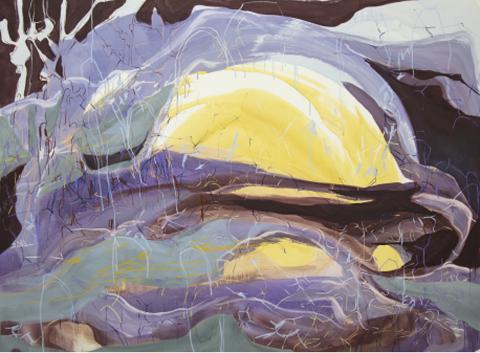
Photo Courtesy of Galerie Nichido Taipei
Janaina Tschape is a New York based German artist debuting her first solo exhibition in Taiwan at Galerie Nichido Taipei. Mapping the Undertow Under a Pale Blue Sky (蒼藍天空下 描繪暗湧) presents a series of new paintings that feature “earthly landscapes, ethereal female silhouettes as well as aqueous tones and biological forms,” writes the gallery in a press release. Tschape’s paintings are richly layered with meticulous application of watercolor, casein, colored pencil and pastel. Over the past 20 years, she has used a range of mediums to approach landscape, including painting, drawing, photography video and sculpture. “Referencing myth, morphology and the mysteries of aquatic states, she has developed a distinctive language of abstraction in which organic forms are imbued with a remarkable luminosity.”
■ Galerie Nichido Taipei (台北日動畫廊), 3F, 57, Dunhua S Rd Sec 1, Taipei City (台北市敦化南路一段57號3樓), tel: (02) 2579-8795. Open Tuesdays to Saturdays from 11am to 7pm
■ Until March 9
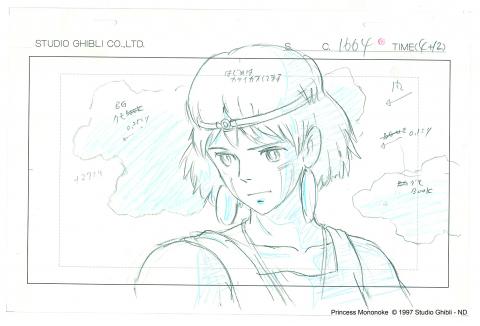
Photo Courtesy of Studio Ghibli
Since the 1980s, legendary Tokyo-based animation film studio Studio Ghibli has been creating unforgettable films that have touched the hearts of children across the globe. The studio was co-founded by the master animator and manga artists Hayao Miyazaki and Isao Takata and Toshio Suzuki. Over the last four decades, Studio Ghibli has released an incredible catalog of works, including Castles in the Sky, My Neighbor Totoro, Kiki’s Delivery Service and Princess Mononoke. The studio’s 2001 production, Spirited Away, tells the tale of a young girl who enters a fantastic world of Shinto-Buddhist folklore. To date, the film remains the second highest grossing animation film made in Japan, and was awarded Best Animated Feature at the 75th Academy Awards. Over 1,400 original illustrations from Studio Ghibli are presently on view at Studio Ghibli Layout Designs (吉卜力動畫手稿展), offering a view behind the scenes of their most incredible films. The show shares their design process of character building, background treatment, positioning and animation, and how the stories are brought to life with expressive details and vitality.
■ Chiang Kai-shek Memorial Hall (中正紀念堂), 21, Zhongshan S Rd, Taipei City (台北市中山南路21號), tel: (02) 7721-6955. Open Mondays to Fridays from 9am to 6pm. Admission: NT$320
■ Until April 18
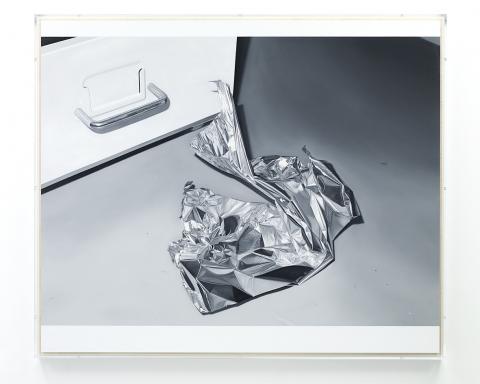
Photo Courtesy of Sean Kelly

The Taipei Times last week reported that the rising share of seniors in the population is reshaping the nation’s housing markets. According to data from the Ministry of the Interior, about 850,000 residences were occupied by elderly people in the first quarter, including 655,000 that housed only one resident. H&B Realty chief researcher Jessica Hsu (徐佳馨), quoted in the article, said that there is rising demand for elderly-friendly housing, including units with elevators, barrier-free layouts and proximity to healthcare services. Hsu and others cited in the article highlighted the changing family residential dynamics, as children no longer live with parents,

It is jarring how differently Taiwan’s politics is portrayed in the international press compared to the local Chinese-language press. Viewed from abroad, Taiwan is seen as a geopolitical hotspot, or “The Most Dangerous Place on Earth,” as the Economist once blazoned across their cover. Meanwhile, tasked with facing down those existential threats, Taiwan’s leaders are dying their hair pink. These include former president Tsai Ing-wen (蔡英文), Vice President Hsiao Bi-khim (蕭美琴) and Kaohsiung Mayor Chen Chi-mai (陳其邁), among others. They are demonstrating what big fans they are of South Korean K-pop sensations Blackpink ahead of their concerts this weekend in Kaohsiung.

Taiwan is one of the world’s greatest per-capita consumers of seafood. Whereas the average human is thought to eat around 20kg of seafood per year, each Taiwanese gets through 27kg to 35kg of ocean delicacies annually, depending on which source you find most credible. Given the ubiquity of dishes like oyster omelet (蚵仔煎) and milkfish soup (虱目魚湯), the higher estimate may well be correct. By global standards, let alone local consumption patterns, I’m not much of a seafood fan. It’s not just a matter of taste, although that’s part of it. What I’ve read about the environmental impact of the

Oct 20 to Oct 26 After a day of fighting, the Japanese Army’s Second Division was resting when a curious delegation of two Scotsmen and 19 Taiwanese approached their camp. It was Oct. 20, 1895, and the troops had reached Taiye Village (太爺庄) in today’s Hunei District (湖內), Kaohsiung, just 10km away from their final target of Tainan. Led by Presbyterian missionaries Thomas Barclay and Duncan Ferguson, the group informed the Japanese that resistance leader Liu Yung-fu (劉永福) had fled to China the previous night, leaving his Black Flag Army fighters behind and the city in chaos. On behalf of the